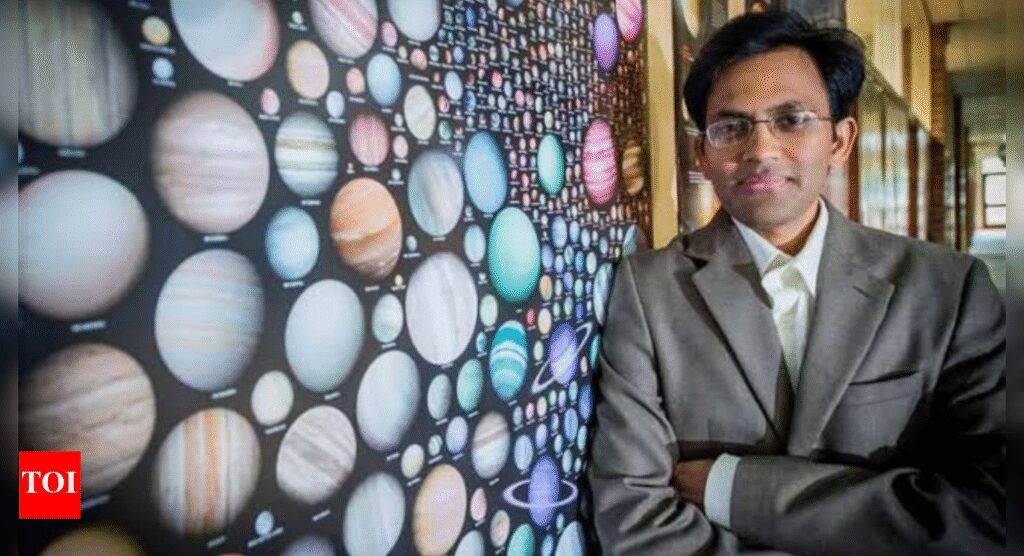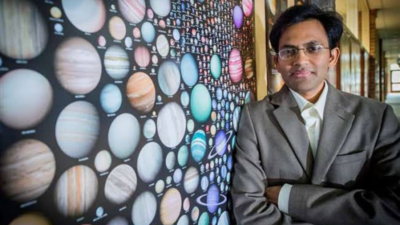In a potential breakthrough in the search for extraterrestrial life, a team of researchers led by Indian-origin astrophysicist Dr. Nikku Madhusudhan has reported compelling evidence of biological activity on a distant exoplanet, K2-18b, located 120 light-years from Earth. The discovery is centered around the detection of dimethyl sulfide (DMS), a molecule that, on Earth, is only known to be produced by living organisms such as marine algae.
Who is Dr Nikku Madhusudhan?
Born in India in 1980, Dr Madhusudhan completed his undergraduate education at the Indian Institute of Technology (BHU), Varanasi, where he earned a Bachelor of Technology degree. He later pursued graduate studies at the Massachusetts Institute of Technology (MIT), where he obtained both his master’s degree and Ph.D. in planetary science. During his time at MIT, he worked under the guidance of Dr. Sara Seager, a renowned expert in exoplanet research.
Currently, Dr. Madhusudhan is a professor at the University of Cambridge. His research focuses on the atmospheres and compositions of exoplanets and their potential to support life. He is widely recognised for introducing the concept of “Hycean planets,” which are ocean-covered planets with hydrogen-rich atmospheres that may offer suitable conditions for life.
A Revolutionary Discovery
Dr Madhusudhan’s team analyzed data from the James Webb Space Telescope (JWST) and found a strong presence of DMS in the atmosphere of K2-18b. This molecule, composed of sulfur, carbon, and hydrogen, is seen on Earth only as a byproduct of biological processes, primarily from marine algae. The findings were published in the Astrophysical Journal Letters and are being hailed as the strongest indication yet of life beyond our solar system.
“It is in no one’s interest to claim prematurely that we have detected life,” said Dr. Madhusudhan at a press conference. “Still, the best explanation for our observations is that K2-18b is covered with a warm ocean, brimming with life.”
He added, “This is a revolutionary moment. It’s the first time humanity has seen potential biosignatures on a habitable planet.”
What is the Nature of K2-18b
K2-18b is a “sub-Neptune” exoplanet, larger than Earth but smaller than Neptune, discovered in 2017. It orbits a cool dwarf star 120 light-years away. In 2021, Dr. Madhusudhan proposed that such planets could be Hycean, meaning ocean-covered worlds with hydrogen-rich atmospheres. Observations from the James Webb Space Telescope revealed gases like methane, carbon dioxide, and most notably, dimethyl sulfide (DMS), a molecule on Earth only produced by life. A follow-up study in 2023 confirmed stronger signals of DMS, suggesting the potential presence of life.
The Fermi Paradox and the Cosmic Silence
Dr. Madhusudhan’s findings also reignite interest in the age-old question known as the Fermi Paradox—if the universe is so vast and seemingly teeming with habitable planets, why haven’t we encountered intelligent life? This paradox, named after physicist Enrico Fermi, reflects the tension between high scientific probability of extraterrestrial life and the persistent absence of evidence. The detection of a potential biosignature on K2-18b doesn’t solve the paradox—but it may mark the beginning of the end of our cosmic solitude. Perhaps life is abundant, but primitive; or maybe we’re simply looking in the wrong way, or too early in cosmic time.
Dr. Nikku Madhusudhan’s pioneering research has brought us one step closer to that answer—and perhaps to a discovery that could reshape humanity’s understanding of its place in the cosmos.
The Road Ahead
The James Webb Space Telescope will continue to study K2-18b, and more powerful space observatories are being planned to search for life-supporting conditions across the galaxy.
Dr. Nikku Madhusudhan’s pioneering research has brought us one step closer to that answer and perhaps to a discovery that could reshape humanity’s understanding of its place in the cosmos.


